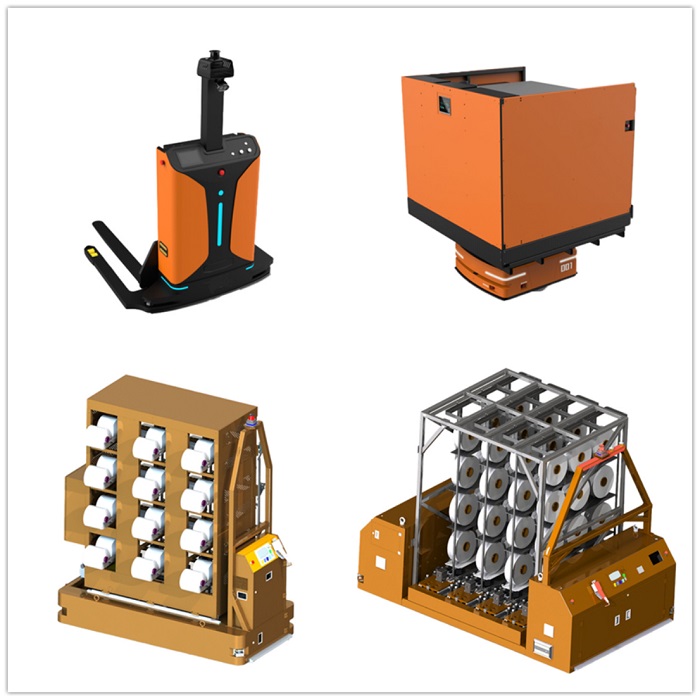The world, especially developed regions in Europe and the United States, is gradually falling into the "labor shortage" problem. A general worker hired by an electronics factory with a monthly salary of 8,000 yuan was snatched away by the electronics factory next door with a monthly salary of 10,000 yuan as soon as he arrived on the scene. In many developed manufacturing areas, recruitment difficulties are more common. In order to retain front-line workers, some companies can only adopt a strategy of continuous salary increases, and some even include stable employees in their corporate strategies.
In order to solve the "labor shortage" problem and save labor costs, SUNTECH has developed and designed AGVs specifically for the needs of various factories. They are active in the front line of the factory and have excellently completed the work of operators and porters.
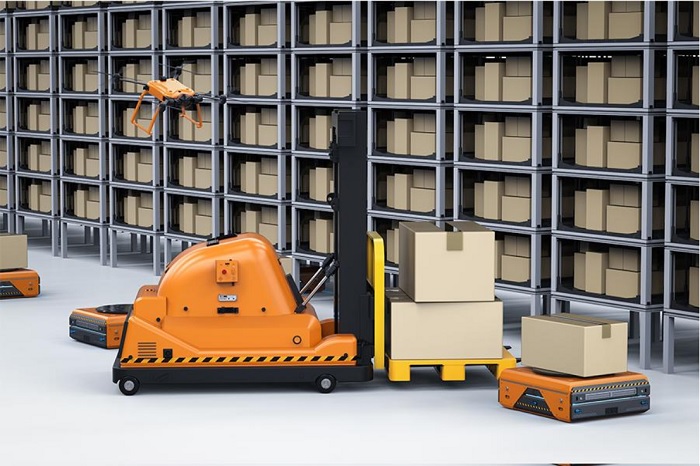
What are Automated Guided Vehicles?
Automated Guided Vehicles or AGVs, are a form of vehicle that moves autonomously from location to location to carry a payload, usually in the manufacturing process. They are not run by an operator when functioning under normal conditions. The method of movement can involve guide wire, electrical signal sensors, or light reading sensors.
Each type of guidance system has costs and benefits, and need to be carefully analyzed before a specific system is designed to keep the AGV on course. These are used in many different industries, from medicine delivery systems in hospitals to warehouse heavy material handling.
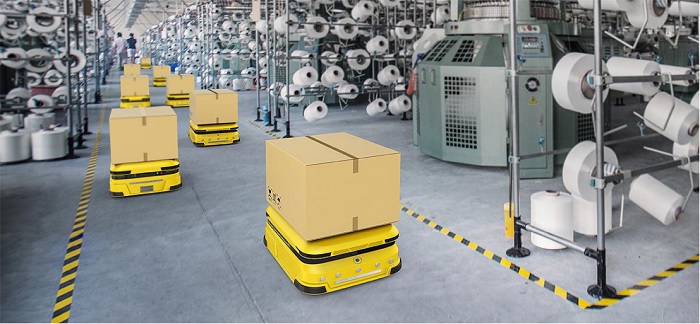
AGV success stories
A leading textile manufacturer turned to Suntech for help. We quickly delivered two AGVs in a short period of time according to its requirements. They used next-generation navigation and control technology to automate sideline delivery and pickup. The result: material handling resources have been reduced by 73%, a two-year return on investment.
During 2018, the company's continuous improvement team faced challenges, requiring new human resources to be reached without reducing efficiency.
The process aimed at improving is: transporting empty barrel pallets for storage and transportation of finished products by the line, and picking up the full barrels and then transporting them to the finished product storage area, and then transporting them to the automatic assembly plant or Another supplier.
Solution: Replace employees who can use pallet jacks or tractors and trolleys with 2 AGVs for pallet handling automated guided vehicles, which can operate in the narrow 8-foot wide aisles of the factory. The AGV is commanded by a next-generation navigation system similar to the navigation system used by autonomous mobile robots (AMR). It relies on simultaneous positioning and mapping (SLAM) to create a digital map of the facility, and then uses natural feature navigation for daily operations, rather than the tape or laser guidance normally associated with AGVs. The navigation system is tightly integrated with GECOM's supervisory control and data acquisition system (SCADA system) to guide AGV tasks. The role of SCADA system is similar to warehouse management or manufacturing execution system.
The project opened two AGVs in early 2021 and has since expanded to five. The latest installation is April 2021. The person in charge said that the result was a 73% reduction in man-hours allocated to material handling. This was our main goal at the beginning of the project, but we were also able to create a safer working environment, especially for employees working in the warehouse area, who no longer need to stay on the floor. "
The company is also preparing to expand the use of AGVs, which may include high-altitude trucks used in warehouses, and the replacement of manual tractors that are still used to transport raw textile materials to the assembly line with AGVs. He thinks this is definitely a successful project.
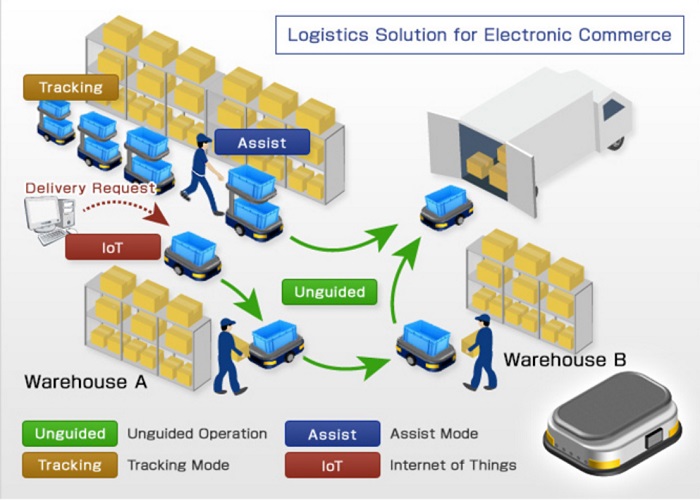
How Do AGVs Work?
AGVs work using several different methods, but follow the same basic principle to function; the vehicle follows a path and a sensor gives feedback for the control system.
1.Wire Based Routing
One of the most basic systems for keeping an AGV on course is to place a wire in the concrete floor that emits a radio signal for the vehicle to follow. A shallow groove is cut along the intended path in the warehouse where the vehicle is intended to operate. A wire that is capable of producing a signal for the AGV to follow is embedded in the floor. Once the path is determined a sensor on the vehicle is used to detect the signal transmitted from the wire. It is a simple system but can have the downfall of being difficult to change once a path is established since the wire is permanently mounted in the flooring.
2.Tape Based Routing
The concept behind tape-based routing is very similar to wire-based. The robot has a sensor that follows a path made out of tape. The tape can be either colored or magnetic. Either variant has its own type of sensing system and they are not interchangeable. Tape routing has the advantage of being easily modified to create new paths, whereas wired routing is costly and difficult to change based on its permanent placement.
One disadvantage of using tape is its tendency for it to become damaged in high traffic areas where the tape wears out over time rendering it unreadable to the AVG. Once the tape has to be replaced it can lead to increased maintenance costs and lost production during that time.
Tape sensing AGVs use a sensor that detects color variations on the floor. Since the tape is a different color than the rest of the floor it is able to perceive a difference and adjusts its path accordingly. Colored tape is generally a less expensive method of path creation than others and offers the advantage of being easily adjusted to create different paths.
Magnetic tape is used in the same fashion as colored tape but uses a magnetized strip to create the path. A sensor is used to follow the tape by reading the magnetism found in the tape.
3.Vision Guided
Vision guided systems utilize computer vision to interpret the surroundings of the AGV. This offers many advantages over a path based system. It creates the possibility for an unlimited number of paths, increasing efficiency and saving time between tasks. A vision-guided system requires no changes to the plant infrastructure. It records the features in its environment and uses that information to interpret its surroundings. Although the vision system is more complex it helps save on some costs because no extra changes are needed for it to perform the intended task.
4.Laser-Guided
Laser-guided systems rely on a rotating laser to give the necessary information to the control unit on the vehicle. The laser unit sends out laser pulses in a 360-degree radius. It receives the beam back into the system and uses it to map out its surroundings.
Lasers are complex but give extreme accuracy and are able to adapt to a changing environment. The ability to adapt to surroundings makes a laser-guided AGV extremely versatile. The added cost is justifiable in an environment that is constantly changing and adds to the safety of the workers around it because it can detect when workers are in its path.
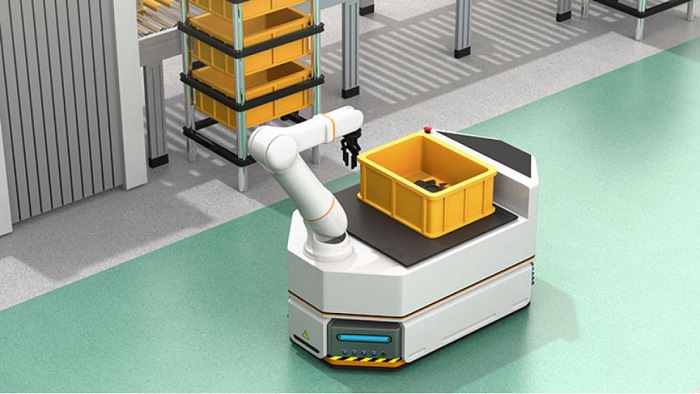
Why use AGV?The Benefits of AGV
1.Increased safety
In general, implementation of these types of systems, increase workplace safety. These systems minimize workers from performing dangerous tasks. Vision systems and laser sensors incorporated into these systems, also ensure that accidents are avoided, in and around these work environments.
2.Increased order and delivery times
Robots facilitate the transport of orders to facilities, picking robots, the pallet, packaging and pricing departments, loading docks, and shipping containers. The rise of autonomous vehicles and drone delivery concepts will further reduce the delivery times of customer orders.
3.Better utilization of floor space
Automating production lines reduces the work area footprint. That means that customers are free to utilize freed up floor space, for other processes or possibly expanding production lines.
4.Reduced warehouse logistics costs
Increased use of robots in warehouses means a reduced need for human labor. While this is disadvantageous if you rely on warehouse logistics jobs, it is a win for companies looking to reduce their overhead costs.
5.Improved quality
Warehouse robotics perform applications repeatedly and with precision every time. As a result, products are manufactured with similar specifications and processes leading to system reliability and requiring fewer repairs.
6.Reduced workforce burden
As robots take over most of the physical work in warehouses, workers will move on to more fulfilling and insightful positions. Robots will also allow people who cannot physically work in traditional logistics operations to potentially gain employment in the maintenance of the units.
7.Reduced transportation delays
The use of AGV’s, AMR’s, autonomous trucks, driverless vehicles, and drones, will help to reduce shipment delays due to quick analysis of delivery impacting factors, like traffic conditions, weather, etc.
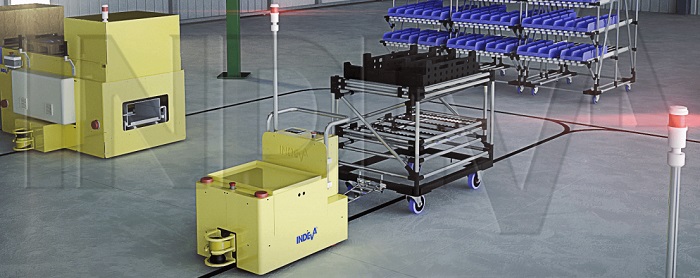
What accessories are needed to assemble AGV?
Commonly used Components for AGV’s:
Timing Belts / Timing Belt Pulleys
Rotary Shafts
Cantilever Shafts
Miniature Linear Guides
Linear Shafts
Ball & Roller Bearings
Factory Frames
Aluminum Extrusion
Rollers
Slide Rails
Sensors / Switches
E-Stop Switches
Stack Lights
Warning & Signaling Lights
Timers
Machined Sheet Metals / Machined Sheet Metal Plates
Gussets, Angle Plates, Welded Steel Stands
Posts and Struts
Shaft Supports
Bushings
Casters
Metal Materials
Conveyors
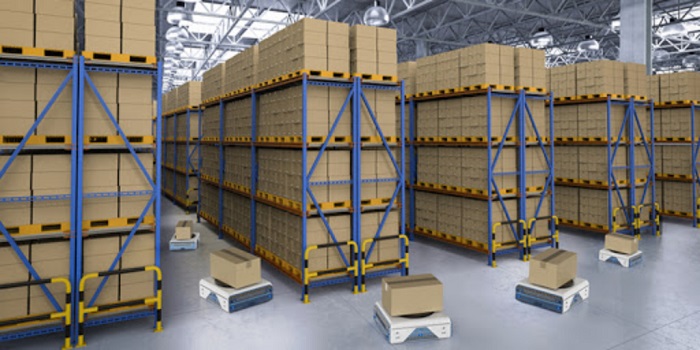
Suntech has 50 years of technical precipitation and design experience, with the "precision and intelligent manufacturing" standard, the AGV developed and produced is light in weight and heavy in load. It adopts intelligent electronic control system, interactive interface and safety system to keep abreast of the AGV operation dynamics and encounter obstacles. Automatic avoidance, safe and controllable, lithium battery power supply, online automatic fast charging, laser guidance, support for manual driving or wireless control, suitable for various transportation scenarios, and help the development of the storage and transportation industry.
